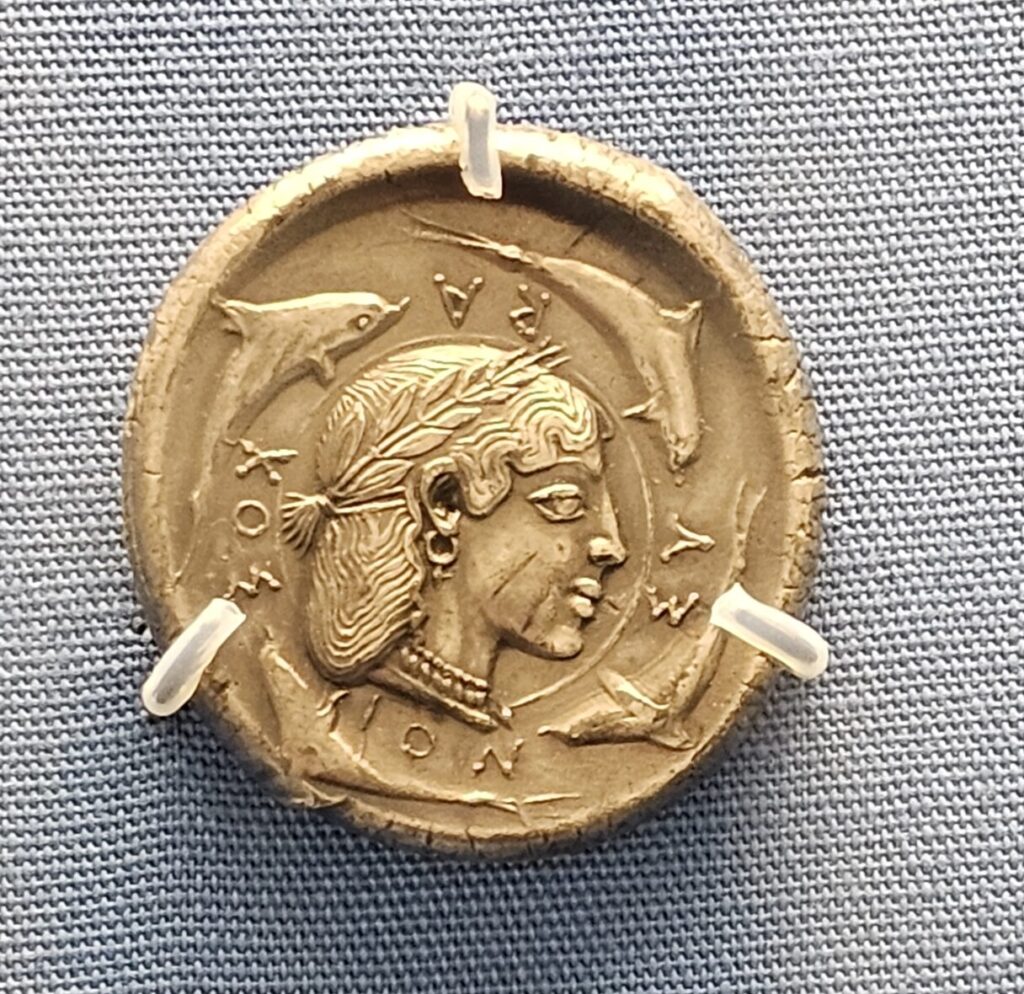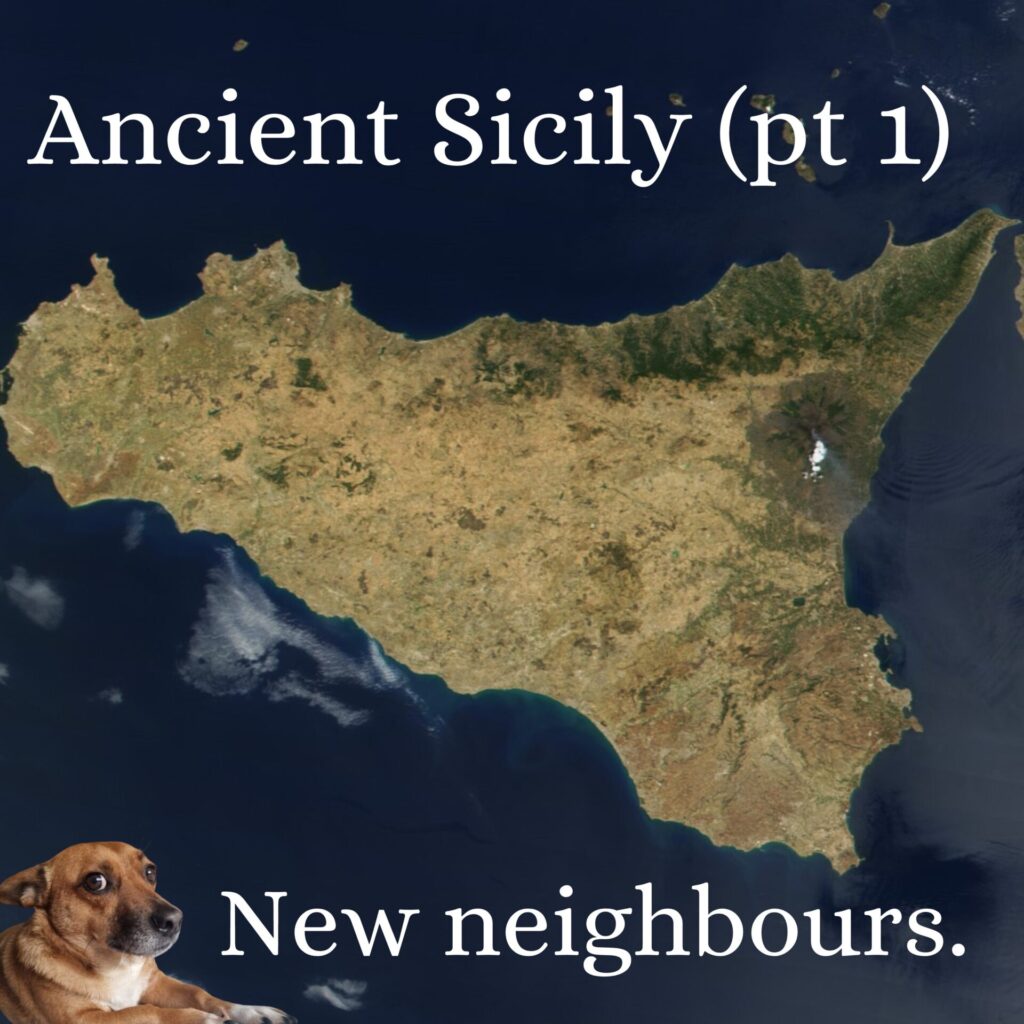Coins provide a valuable insight into how those who produced them wanted to be perceived in antiquity. The resonance of this physical propoganda resonates less today, there’s just so many ways to set your brand or identity. For the Greek colonies of ancient Sicily the opportunity to say something about who you were through coins wasn’t an opportunity missed. Here are a few plus one from southern Italy which I also saw on a trip to the British Museum.
If you want to know more about the colonies of ancient Sicily don’t miss out on my podcast miniseries on them. Just find Ancient History Hound on the app or platform you use.
Selinus.
The below is a stater from Selinus a colony founded in the south west of Sicily in the mid to late 7th century BC. The coin dates to around 500 BC and what you can see are leaves of a wild celery plant or selinon.
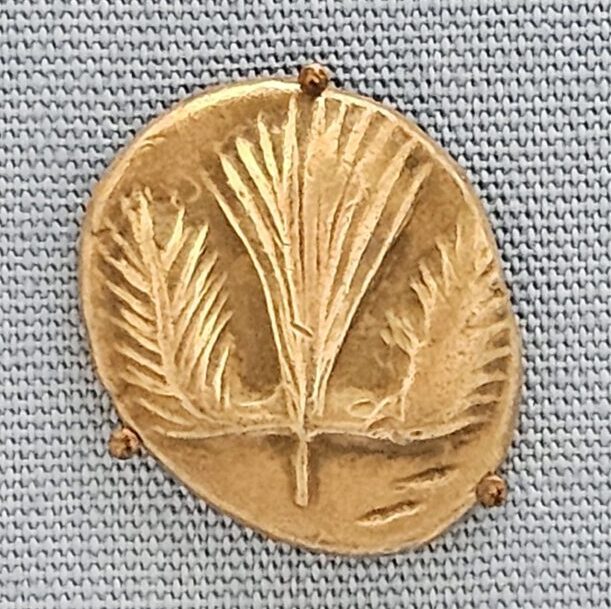
Himera.
This was a colony on the northern shore of Sicily and the coin dates to around 490 BC. The cock was seen in ancient Greece as a proud and capable fighter, they were sometimes used as presents (specifically courting gifts between men). Assuming the date is accurate this would have been used around 480 BC when the tyrant of the city, Terillus, called upon Carthaginian aid as part of a dispute between other Greek tyrants on the island. This resulted in the famous battle of Himera and so perhaps the theme of fighting was prescient.
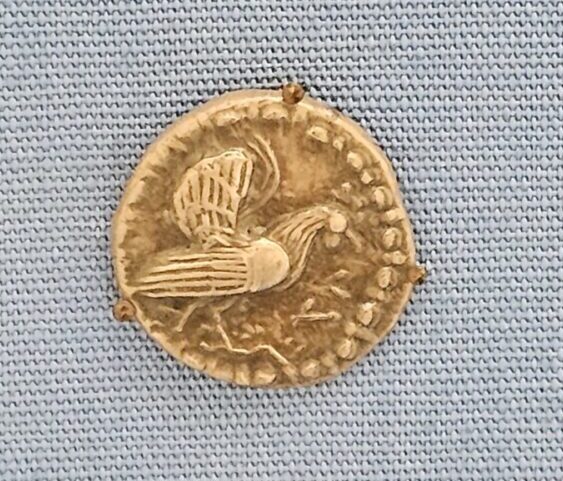
Naxos.
A wonderful depiction of a satyr sat drinking wine. Naxos was thought to have been the first Greek colony on ancient Sicily, founded in the late 8th century BC though the coin dates to much later, around 460 BC. Coinage from Naxos featured the theme of drinking, for example bunches of grapes and the head of Dionysus. This coin has what must be a very rare thing, a satyr behaving himself.
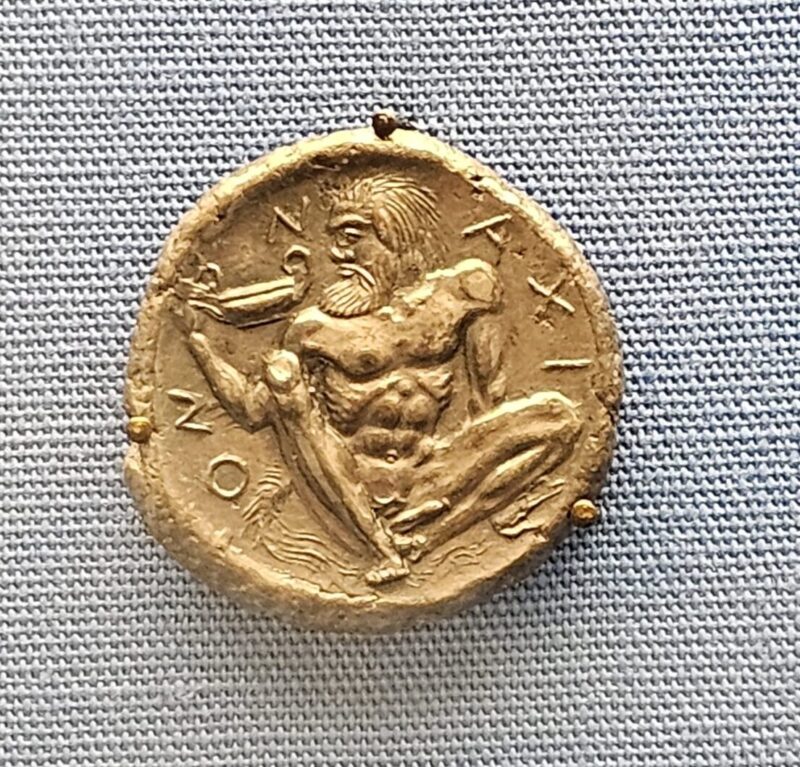
Syracuse.
This colony became a powerhouse of the island and this coin was linked to a main character attached to the place. Gelon was a tyrant who controlled much of the eastern side of Sicily. In 485 BC he managed to take the final piece, Syracuse and moved there. The decadrachm (ten-drachma coin) depicts the nypmh Arethusa who was associated with the city. The date of the coin is argued as in the 470s or 460s BC and it may be associated with queen Demarete, Gelon’s wife.

Gela.
The colony of Gela on the southern coast rose to become a highly influential place and one which delivered a dynasty of tyrants, perhaps the most famous being Gelon and Hieron (both these being based at Syracuse). This coin has a curious creature, a bull with a man’s face. It’s thought to represent Gelas a river god – the colony took its name from the nearby river.
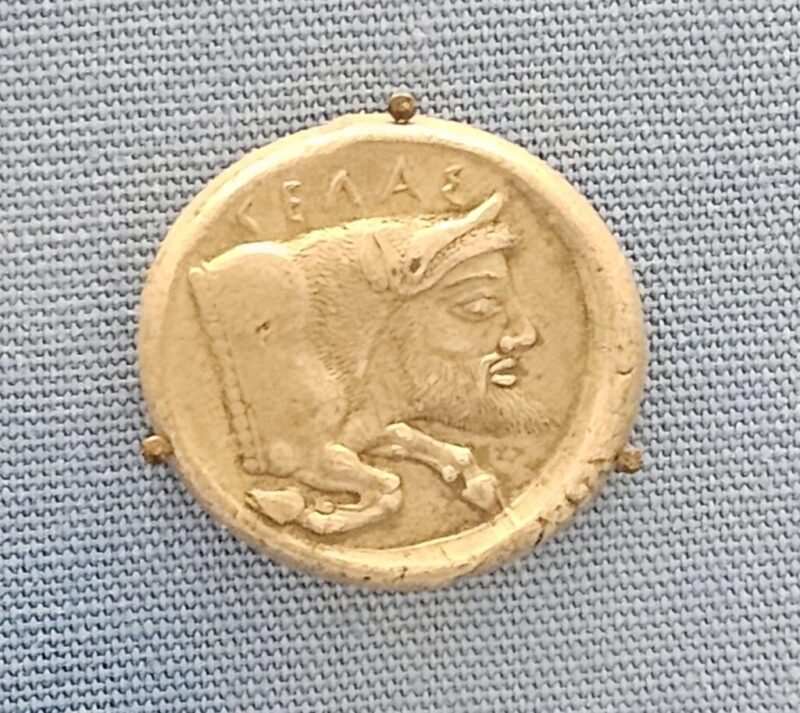
Acragas.
The colony of Acragas (modern day Agrigento) had once been the haunt of a couple of tyrants, Theron for example. However, by the time this coin was issued (circa 440 BC) it was a democracy, albeit in name at least. A crab was apparently a constant on the coinage – perhaps it symbolised the strength of the city on land and sea. It might also relate to the river on whose banks the colony was founded. In case you were wondering it’s now known as Agrigento.

And finally, the non-Sicilian coin!
I love a good story and this coin has one which I couldn’t resist, plus it’s not a million miles from Sicily, in fact you could possibly swim the distance. This coin was minted by Anaxilas, the tyrant of Rhegion (modern day Reggio Calabria). This location sits on the toe of southern Italy, just across from modern day Messina. Anaxilas did end up capturing Messina and changing the name of it from Zankle to Messina. The coin has an image on each side. On one a driver sits behind a cart and the other depicts a hare.
The image of the driver and cart was a celebration of Anaxilas’ victory at Olympia (either 484 or 480 BC). Not the main chariot event but the apene, a race where mules pulled a cart. The image of the hare may be linked to the story of Anaxilas’ introduction of the hare to Sicily (cited by Pollux in his Onomasticon).
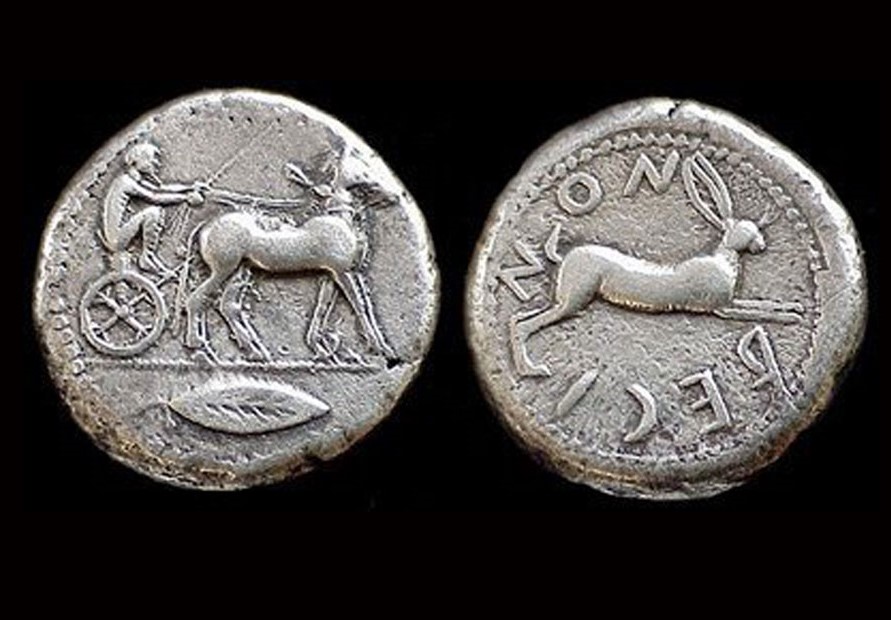
Further Reading.
Rutter, N. Coin types and identity: Greek cities in Sicily in Sicily from Aeneas to Augustus.

